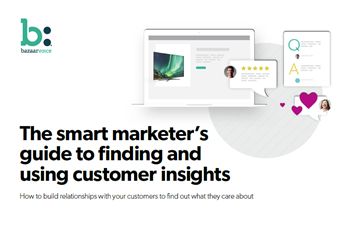Marketing analytics has become a significant element of any digital strategy. Professionals across the field, whether they are specialists in social media, SEO, or content marketing, need to ensure the right tracking is in place to gauge the success of any campaign.
For these to play the role they deserve, there needs to be the right tracking in place before you start a campaign. This will help you gain insight about the journey buyers undertake when they land on your website, as well as gathering information about general marketing channels.
Marketing analytics can also help companies gain perspective about what an achievable goal looks like. By looking at the number of page views or conversions a site gets during a month, you can better understand what potential progress you can make. This can also help shape your strategies for managing social media channels.
Most modern businesses will have social, SEO and digital content, as well as their own website for inbound marketing, meaning there can be a lot of data to handle and understand. For many marketers, this isn't something that comes naturally to them but there are ways that you can upskill your team.
This will make understanding and interpreting data from marketing campaigns much easier, which will be especially important with many businesses looking to increase their budgets in this area.
However, ITSMA and Vision Edge Marketing found that nearly three-quarters (74%) of marketers are unable to measure or report how their campaigns are impacting a business. It's unclear whether this is a result of a lack of knowledge or poor resources but it highlights a worrying shortfall in marketing.
So how can marketers get their heads around data and how it can influence their campaigns?
Focus your efforts
If you want to take data seriously, you need to first refine the amount of information you are collecting. It can be easy to think that you should gather all the data you can and then work out how to use it later but this can be unachievable and overwhelming. For your information to have any real value, you need to understand what it means in the context of your campaign.
So instead, focus on identifying the data that will be most important to your business goals and work with them. Once you have picked two or three metrics to track, it's much easier to truly understand them - and what influences them.
Application is key
A key part of understanding the data you collect is applying it directly to your campaign or even the wider business. For example, if you want to know how to increase the number of visitors to your website, you'd probably want to look at data such as mouse tracking, time on page and where visitors are coming from.
This should allow you to see where data can influence strategies and how understanding your customers is at the heart of it all .
Use data to improve your customer profile
It's important that, as you gather information about your customers, it's all brought together. Whether you want to do this manually or have a program to automate the process, it's a key part of getting value from your data. Otherwise you can find that you become focused on what metrics and KPIs to track and the figures when the allocated period is up but actually have no idea where it fits in your consumer profile.
If any incoming data is analyzed in the context of 'how does this improve our customer profile' then you immediately have - not only a way to focus your findings - but also a way to develop a holistic consumer persona. A reliable and accurate customer profile is at the heart of every effective marketing strategy.
Understand when more is needed
Sometimes it can feel like data analytics is a hornet's nest that can snowball out of control but the key is identifying when you have enough information to make a decision and when more data is needed.
A great deal of marketing is trial and error. You use the current data you have to form a strategy and then take information from this to guide your future campaigns. You may find data-driven marketing reveals that you were wrong about certain elements and this may be an instance where you need more data. There's nothing wrong with being proved wrong by the figures you gather, as long as you adapt your strategy.
Don't let assumptions guide you
When you first start forming a campaign, it may be that you don't have any data to work with and so an element of your proposal has to be gut feeling. But even in this scenario, there are still ways you can gain insight into your customer base. Competitor research, social listening and user journey analysis allow you to learn more about what your audience is talking about and how they are using the products/services you're offering.
This means you should never let assumptions be the basis of a strategy without some data to support it and a comprehensive analysis of where your assumption has come from. Not only does this allow you to better engage your consumers but it also means there's much less chance your strategy may be unconsciously biased or prejudiced in some way.
Access the latest business knowledge in Marketing
Get Access






Comments
Join the conversation...